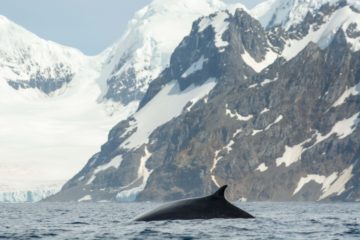PRESS RELEASE: New marine life atlas
25 August, 2014
New Atlas of Southern Ocean marine life A new atlas, providing the most thorough audit of marine life in the Southern Ocean, is published this week by the Scientific Committee …
 This Darwin Plus funded project aims to improve our understanding of how Antarctic krill, foraging whales and the krill fishery interact in space and time, to improve krill fishery management and better conserve krill-based ecosystems.
This Darwin Plus funded project aims to improve our understanding of how Antarctic krill, foraging whales and the krill fishery interact in space and time, to improve krill fishery management and better conserve krill-based ecosystems.
Antarctic krill (Euphausia superba) are a key species in the Southern Ocean ecosystem. These small crustaceans are one of the most abundant animals on earth and are a major food source for many higher predators including penguins, seals and baleen whales. Antarctic krill are also the focus of a commercial fishery.
The Commission for the Conservation of Antarctic Marine Living Resources (CCAMLR) manages the krill fishery with an ecosystem approach, where krill stocks should be maintained at productive levels and fishing activities should not interfere with krill-dependent consumers. However, krill fishery management is conducted at large spatial scales, but fishing activity tends to be more concentrated. CCAMLR will not allow the krill fishery to expand without the implementation of management procedures that considers these differences in scale. Currently CCAMLR plans to implement finer scale management procedures by conducting and linking three areas of research 1) krill stock assessment 2) krill growth models and 3) spatial overlap analysis, which includes the prey consumption and location of foraging whales.
To conserve biodiversity and improve protection of natural environments, we need a better understanding of how whales, Antarctic krill and the krill fishery interact in space and time. This is especially important as baleen whale populations are recovering from historical exploitation and climate change is affecting krill distribution.
The Safeguarding Antarctic krill stocks for baleen whales project aims to improve our understanding of the interactions between foraging whales, Antarctic krill and the fishery, and provide information to CCAMLR to improve krill fishery management and conserve krill-based ecosystems.
Research objectives:
We will conduct fieldwork to deploy biologging tags and conduct prey surveys in the Western Antarctic Peninsula region, over two austral summers/autumns (early 2024 and early 2025).
By analysing this fine-scale spatiotemporal distribution of krill, baleen whales and fisheries, we aim to understand predator-prey dynamics that are uniquely relevant to the scales of operation of the fishery and the ecosystem.
Ryan R. Reisinger (University of Southampton)
Philip Anderson (Scottish Association for Marine Science)
Ari Seth Friedlaender (University of California Santa Cruz)
25 August, 2014
New Atlas of Southern Ocean marine life A new atlas, providing the most thorough audit of marine life in the Southern Ocean, is published this week by the Scientific Committee …
25 April, 2012
Warm ocean currents cause majority of ice loss from Antarctica Reporting this week (Thursday 26 April) in the journal Nature, an international team of scientists led by British Antarctic Survey …